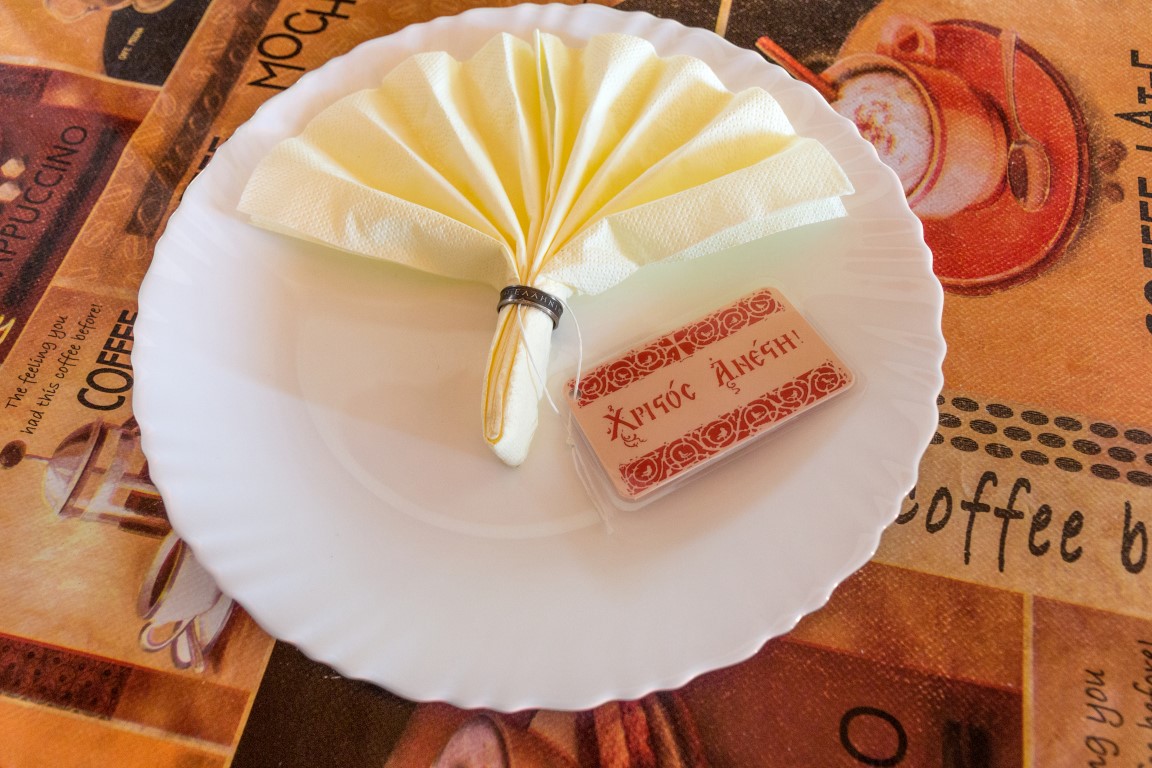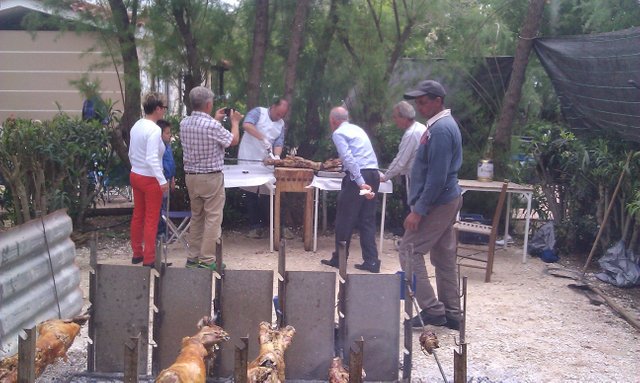Memories of the Greek - Orthodox Easter 2016
Easter is for the Greeks the biggest celebration of the whole year. Unlike in Germany, it is celebrated in every household. Everywhere in the countryside and in the cities, families celebrate together until the early hours of the morning. There is lamb that has been grilled over charcoal, there is eating, drinking and of course dancing for hours.
I enjoy a glass of Retsina here. Well then...Chrónia pollá .... all the best!
The Greek Easter is one of the Christian Orthodox holidays, which differ from the Catholic Easter and can be up to almost five weeks apart each year. Easter is one of the most important traditions in Greece and is also called Holy Easter (Greek = Ágio Pás-cha). On Easter, the sufferings of Jesus Christ are depicted and celebrated in a very special way.
Easter 2016
In different regions of Greece, the Easter customs and food may differ, but basically the typical tradition does not change. The traditional Easter bread (Greek = Tsuréki) as well as the red eggs and of course the Greek Easter pastry (Kulurákia) cannot be missing for the Greek Easter.
The Greek Easter period begins 40 days before Easter with Lent. Christians abstain from meat and eat seafood that does not contain blood (e.g. octopus), rice and vegetables. In addition, in the Greek Orthodox Church, five hymns about the Holy Mother of God are sung every Friday.
This period is followed by the Great Week (Greek = Megáli Ebdomáda) or the Week of the Suffering of Jesus, during which, in addition to meat, no oil or dairy products may be eaten. In this week Jesus sacrificed himself for humanity by shedding his blood. For this reason, Christians must not come into contact with blood or eat food that comes from animals.
My host gift at the time for everyone invited to the Easter celebration. - A napkin ring made from a ten drachma coin.
.jpg)
The Great Week begins from the Great Monday and ends on the Great Saturday at midnight with the resurrection of Jesus Christ. Every evening, the service takes place, with large numbers of Christians going to church to listen attentively to the psalms about the life of God. On the big Tuesday, the priest recites a play (Greek = Tropário tis Kassianís) about a beautiful woman who falls in love, at the same time sells her body to men and finally becomes a nun who spends her life exclusively in the monastery and devotes herself to God in order to free herself from her sins. The next day, after the service, Christians are given a piece of cotton wool to dip in oil and then cross their foreheads so that their sins will be forgiven, and they will be ready to receive the priest's blessing after their confession on the morning of Great Thursday (known as Maundy Thursday).

Holy Thursday is one of the most significant days of the Greek Easter week, as on this day the twelve Gospels describing the sufferings of God are read aloud. After the sixth Gospel, all the lights of the church go out and the faithful, with lit candles and glazed eyes, watch the re-enactment of Jesuss crucifixion, singing the ancient Greek psalms "Símeron kremáte epi ksílou..... " ("Today he is hanged on the wood....."). At this moment, you hear the hammering of the nails with which Jesus was nailed to the cross by his hands and feet. It is a very emotional moment and most believers, with tears in their eyes, wonder why Jesus had to sacrifice himself for humanity and suffer so much. Following this, the cross with the body of Jesus Christ is placed in the centre of the church and people lay flowers and wreaths in front of it to express their grief over his death. After this procedure, the last six Gospels are recited and after the service, very many Christians stay there to spend the last hours with Jesus before his funeral, to show their love and pay their last respects to him. Young women and men decorate his wooden coffin all night with numerous seasonal white and red flowers, upon which the body of Jesus Christ is placed on the morning of Good Friday. In Greek it is called epitáfios. It is a gold embroidered cloth depicting the body of Jesus with the Holy Mother Mary and the angels.
On Good Friday, the priest takes Jesus' body down from the cross (Greek: Apokathílosi). Jesus' body is depicted on a piece of wood and symbolically represented. Then the body is wrapped in a white sheet and placed behind the Holy Table (Agía Trápeza). At the same moment, the Epitáfios, that is, the gold embroidered cloth with the body of Jesus is placed on the wooden coffin and many women walk around the coffin several times, scattering petals on it and spraying it with myrrh. On the evening of Good Friday, during the service, the priest, and his entourage carry the flower-decorated coffin out of the church and walk once around the church with it and the faithful. This process symbolizes the number of days until the resurrection of Jesus Christ. After this walk (Periforá), four men lift the epitáfio in front of the entrance to the church and the Christians walk under it, taking some flowers with them, which stand for goodness and health. They also receive the Holy Blessing by symbolically bowing to the Lord.
.jpg)
On Great Saturday in the morning, most Christians go to church again and take the bread (symbolizing the body of Jesus) and the wine (symbolizing the blood of Jesus) to be blessed and wish each other a good resurrection (Kalí Anástasi). On Saturday evening, all the people gather again in the church, solemnly dressed, with the traditional, decorated candle (Greek = Lampáda) in their hands and wait for the great moment. Throughout the ceremony, the priest sings various psalms, accompanied by the singing of the people. As soon as the ancient Greek verse "Défte lávete fós" ("Come and take light") is heard, the Holy Light is on by the priest to each believer until all the candles are. Finally, at midnight, the psalm (Tropárion) is heard, announcing the resurrection of Jesus Christ:
"Christós anésti ek nekrón ("Christ is risen from the dead,
thanáto thánaton patísas, with his death he has conquered death,
kai tis en tis mnímasi and those who were in the tombs,
zoín charisámenos.")
As the priest and the crowd sing this three times together, bells ring simultaneously, fireworks light up the sky, candles burn, everyone embraces and kisses. Of course, the faithful pray, saying to each other the words Christós Anésti (Jesus is risen) and Alithós Anésti (He is truly risen). Finally, they wish each other Chrónia pollá (All the best).
After the congratulations, most go home to finally enjoy the first meat dish after a long period of fasting. The traditional soup, known in Greek as Majirítsa, consists of offal from the lamb, liver, lungs, intestines, heart and various aromatic herbs, as well as a lemon sauce. In addition, the red eggs (symbolizing the blood of Jesus) are beaten against each other and the one whose egg remains whole and is not damaged is the happy one for the whole year. Some people play an Easter joke by buying wooden eggs, dyeing them red and thus winning the egg beating every year. The traditional Easter bread (Tsuréki) and the Greek Easter pastry (Kulurákia) must not be missing from the midnight meal.